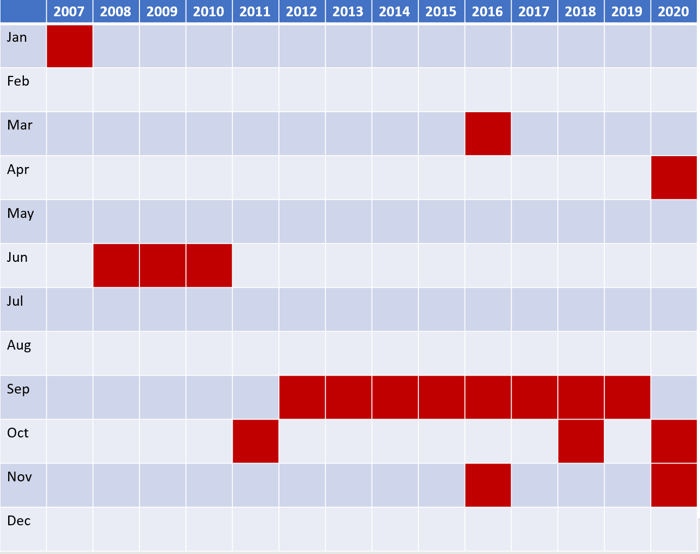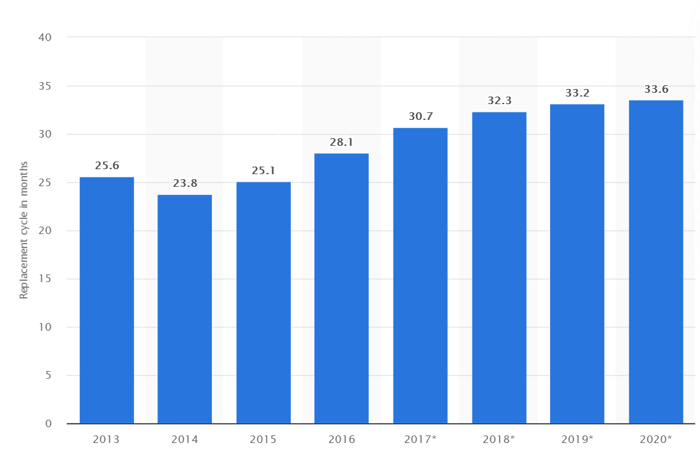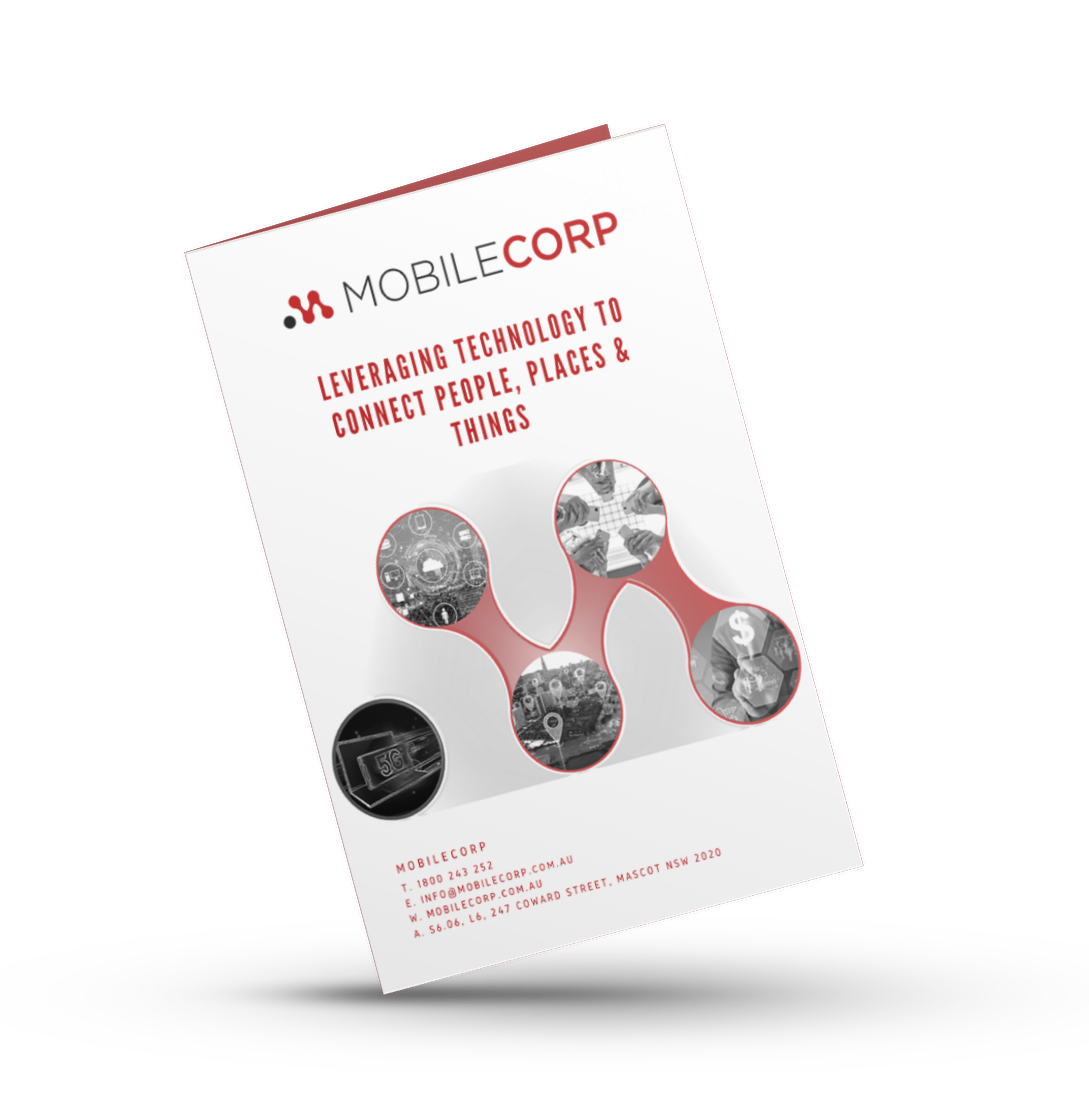Is there a specific time of the year when upgrading a corporate mobile fleet will maximise cost savings?
The simple answer is yes. Savings can be maximised by buying - and selling - during specific months of the year.
But, there are other factors besides cost, that should impact a decision on when to upgrade.
These include the security/risk profile of the devices, any effects on employee productivity, the workload of IT support resources, the need to integrate with new business processes or applications, and the positive impact of new features offered by new devices.
Why should a business upgrade its mobile devices regularly?
While delaying the replacement of older devices may seem like a cost-saving approach, there are many valid reasons to upgrade regularly and these may outweigh the financial upside of a delay.
Some of the reasons that business should upgrade devices regularly are:
- To protect against malware and cyber attacks
Ok, so a new device alone, is not going to achieve this. In most breach events and ransomware attacks, the biggest weakness is the human holding the device, rather than the device itself. However the newer the device, the more sophisticated the internal security features will be, and the more likely that OS and security patches are up to date.
- To reduce the impact on IT resources
Older devices need more support. That's the reality. As devices age, there is more likelihood they will struggle with the demands of new software and a lack of storage space. The device will also physically deteriorate with battery failure most common. The growing IT support costs, combined with the time users spend troubleshooting them, can quickly surpass any savings.
- To cope with the latest OS and applications
Having the latest OS and application versions ensures the device is security patched and bugs are being constantly remediated. There comes a time with older devices when they are no longer supported by the manufacturers, but well before that, there will be a noticeable slowing of software and application performance. In most cases, this process is gradual, yet continual. Hardware on older smartphones will lose capabilities, little by little, after updates of operating systems and apps. Operating-system updates and new applications leave older hardware behind.
- To protect the productivity of employees
Slow loading of apps or web pages, screen freezes, intermittent drop-outs, and having to constantly recharge a dying battery...this is productivity dying by a thousand tiny cuts. The smartphone is a critical business tool and when it performs sub-optimally it impacts directly on the ability of employees to perform.
- To take advantage of new device features
New devices will perform faster, be more secure, and will handle higher processing demands. There will also be a range of new features which may or may not be useful for employee productivity. A question that many businesses will have right now is whether to invest in a device with 5G. All the newest handsets have 5G compatibility but there is a price premium at this level. Although the business benefits of 5G are yet to be realised, what about in two years' time when your employees still have an iPhone 11 or SE and no 5G?
- To ensure all corporate devices are enrolled in an EMM/MDM environment
With today's distributed workforce, it is more important than ever to have all corporate devices able to be managed remotely via an EMM environment like Microsoft Intune or VMware Workspace ONE. This will enable the company to enforce passcodes and policy restrictions, update OS and deliver security patches, as well as to deploy and manage applications. Corporate devices also need to be enrolled in the device manufacturer's programs - Apple Business Manager, Samsung Knox or Android Enterprise. This will enable zero-touch onboarding for end users, and asset inventory management for the business. This enrolment is done most simply at device upgrade time.
- To boost the morale of employees
Who doesn't want a new device, right? Employees get a little excited when they are provided with an upgraded device. It sends a subliminal message that the company is on top of its game. It also says the company is invested in their success. Being provided with the best tools for the job has productivity benefits and also positive psychological benefits.
The bottom line is that employees are insisting on a new level of mobility that many older devices simply can’t deliver. And while efficiency gains can be somewhat difficult to quantify, new mobile devices are continuing to deliver greater value across the business when it comes to productivity and security.
Is there a best month to upgrade the corporate mobile fleet ?
For consumers - yes, definitely; for business - yes, potentially.
In corporate Australia, the iPhone has the lion share of the market. Almost every year, Apple announces new iPhone models in September. For eight straight years, 2012-2019, the major Apple event has taken place in September.
In 2020, the intention was to continue this trend but pandemic-related impacts saw two iPhone 12 models announced a few weeks later in October, and two more in November. From 2021, the cadence of new iPhone launches has returned to the pre-pandemic practice of a September iPhone event.
Whenever a new iPhone is launched, the price of older models is discounted.
Generally, just weeks after the launch of a new iPhone, the cost of the previous model is reduced by around $200.
So, in theory, the best month to purchase N-1 iPhones is October/November, a few weeks after the launch of the latest model.
The catch for business is in the supply chain. With each impending iPhone launch event, Apple and all its resellers - carriers like Telstra, and retail stores - begin to divest older stock and reduce future orders. All iPhones tend to go on constraint as vendors try to avoid procuring devices that may drop in price before they are on-sold.
Of the devices that are available, the priority for order fulfillment is consumer. Business orders are often placed on back order and can take weeks or months to fulfil.
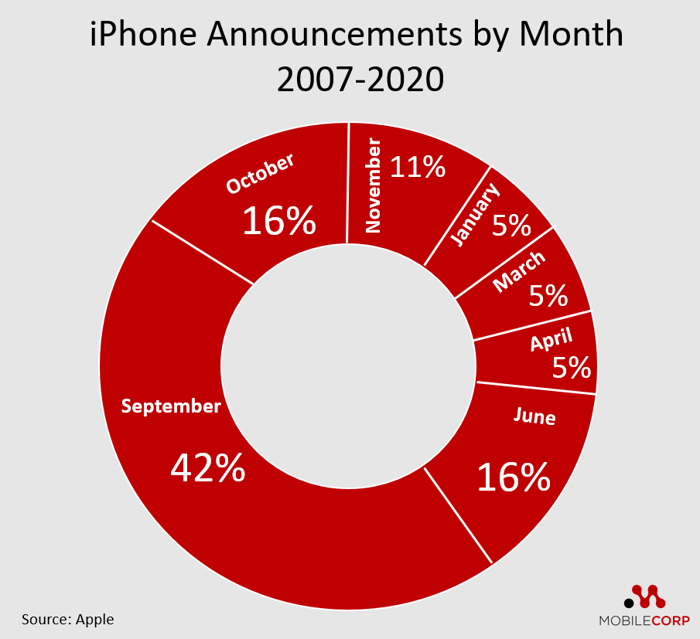
iPhone announcements by calendar month
Meanwhile, if an organisation wants to purchase the newest device available, pre-ordering is the only way to go. Sadly, in Australia, Apple and the carriers alike, prioritise consumer purchasing. It is inevitably several months before the supply chain delivers the latest device for business orders.
Is there a best month to divest corporate mobile devices?
It is possible to earn significant funds from divesting corporate devices through an approved buyback program. We have several MobileCorp enterprise customers who have received in excess of $50,000 in buyback funding when they have upgraded their fleet. These earnings can be re-invested in device procurement, in MobileCorp managed services, or as a credit on the Telstra bill.
Learn more about the Sustainable BuyBack Program
There are certain months when the prices for buyback are maximised.
This tends to be at the midpoint between smartphone manufacturer launch events. Each time a new smartphone model is launched the commercial benefit assigned to older models is adjusted down.
New iPhones are mostly unveiled in September so the best prices for buyback of iPhones tends to be from January-July.
Samsung devices are mostly launched in February so the best prices offered for buyback of Samsung devices tends to be from May-November.
Besides the commercial benefit, the sustainable buyback program reduces the amount of e-waste, protects the planet, and supports disadvantaged communities.

How long should an organisation wait between mobile device upgrades?
Traditionally, organisations upgraded their mobile fleet every 24 months, usually in line with carrier plan re-contracting. However, with carriers shifting to flexible month-to-month terms - like Telstra Adaptive Mobility - there is no longer a unique compelling event to trigger an upgrade
Due to a combination of high costs for flagship smartphones, improvements in device durability, and the mandated consumer guarantee laws, many organisations have been extending the lifespan of their mobile devices.
There has been a trend for both consumers and business to extend the time between upgrades from less than two years in 2014 to almost three years in 2020.
It would seem reasonable for most organisations to be upgrading the mobile fleet between two and three years.
Average lifespan (replacement cycle) for smartphones 2013-2020
How to manage a Mobile Device Fleet upgrade
Managing a mobile fleet upgrade can be a time-consuming and exacting task, especially when dealing with a distributed or hybrid workforce.
It is a project which is critical to business productivity, continuity and security.
It is also a project with high visibility, touching end users from every level of an organisation.
It is a project that needs to be delivered right the first time.
Key considerations include:
- Device Provisioning - simplifying setup with SIM card inserted, battery charged, updated to latest OS; extending lifespan by applying a screen protector and case.
- Carrier Provisioning -applying/porting Telstra service, applying account level codes, activating SIM or eSIM, assigning ownership, billing
- Bulk Deployment - deploying devices to end users where-ever they are, providing communications and instruction guides, help desk support
- Device Enrolment and EMM - enrolling devices in Apple Business Manager, Samsung Knox, Android Enterprise
- Zero-Touch End-User Onboarding - utilising EMM for an out-of-box startup experience for end user, applying all passcode and restriction/security policies
- Asset Inventory Management - assigned asset ownership to a specified end user, cost centre allocation, warranty details.
MobileCorp manages enterprise mobile fleet upgrades, porting projects, carrier provisioning and deployments for Australian enterprise and business customers.
Give us a call on 1800 243 252 to discuss your requirements.
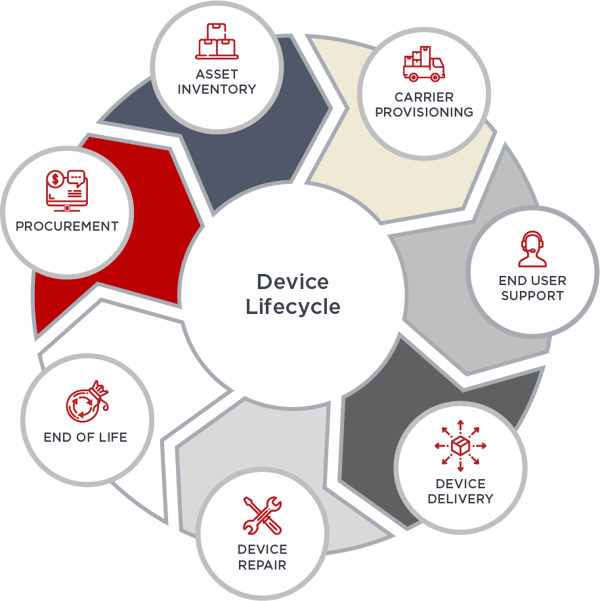
About MobileCorp
MobileCorp is an enterprise ICT solutions company with a mission to deliver our customers a communications technology edge. We provide Managed Mobility Services, Enterprise Mobility Management, Complex Data and IP Network and Security, and Unified Communication solutions. We have a proven track record providing managed services for Australian enterprise and business, and we are a Telstra Platinum Partner. Contact Us
Mobile Devices Michelle Lewis 14 Jul 2021
Related Posts
Popular Tags
- Mobility (81)
- Mobile Devices (79)
- Telstra (66)
- 5G (64)
- MobileCorp Managed Services (55)
- Mobile Network (34)
- Networks (34)
- Cradlepoint (32)
- Apple (29)
- MobileCorp (29)
- iPhone (25)
- Remote Working (23)
- Network (17)
- Covid-19 (16)
- Mobile Security (15)
- Wireless WAN (15)
- Cyber Security (14)
- UEM (14)
- MDM (11)
- Mobile Expense Management (10)
- Mobile Device Management (9)
- TEMs (9)
- Mobile Device Lifecycle (8)
- Cloud (7)
- Unified Comms (7)
- Unified Communications (7)
- Wandera (7)
- Android (6)
- Sustainability (6)
- Data Networks (5)
- Network Security (5)
- Samsung (5)
- Security (5)
- Digital Experience (4)
- IOT (4)
- Microsoft Intune (4)
- Blog (3)
- IT Services (3)
- Microsoft (3)
- Data (2)
- Government (2)
- Microsoft 365 & Teams (2)
- Retail (2)
- nbn (2)
- webinar (2)
- 4G (1)
- DAS (1)
- EMM (1)
- Emerging Technologies (1)
- Hosted Telephony (1)
- Managed Desktops (1)
- SD-WAN (1)
- Starlink (1)
- Telstra Services (1)
- WWAN (1)
- video (1)




